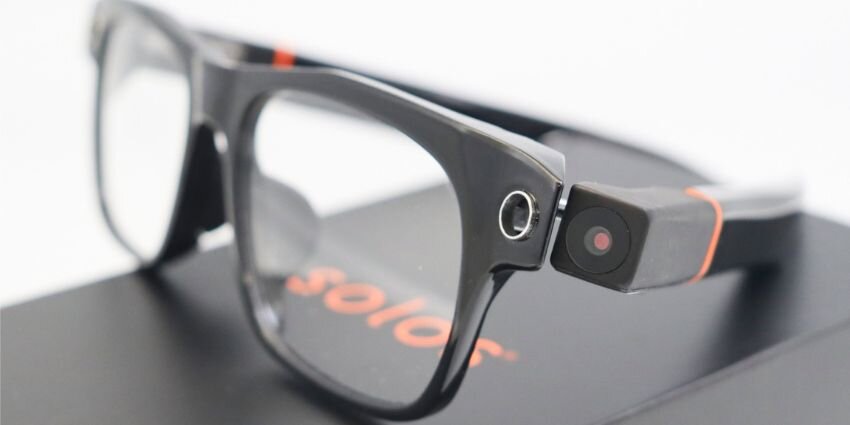Making waves at the 2024 Hong Kong Smart Glasses Summit, Solos has introduced its latest innovation, the AirGo Vision smart glasses. These cutting-edge wearables are poised to provide a compelling alternative to Meta’s popular Ray-Ban specs. Building upon an already impressive portfolio of intelligent wearables, Solos is equipping its latest offering with a built-in smart assistant powered by OpenAI’s formidable GPT-4o model.
Solos has established itself as a strong contender in the smart glasses market over recent years, delivering products enhanced with built-in audio, text-to-speech capabilities, and advanced artificial intelligence. Despite these features, the absence of a built-in camera has been a noticeable gap in their lineup until now.
Determined to remain at the forefront of smart glasses innovation, Solos is gearing up to present its latest “Vision” specs to the public. This launch prompts an intriguing question: how will these lightweight wearables perform, and can they outshine prominent competitors like Meta’s Ray-Bans?
What are the Solos AirGo Vision Specs?
The Solos AirGo Vision smart glasses represent the newest addition to Solos’ lineup of intelligent specs. Unlike many innovators in the smart glasses space, Solos isn’t concentrating solely on augmented reality with this release.
The AirGo series doesn’t feature screens to overlay augmented content onto your real-world view. For a full AR experience, you’d need to look at options such as the RayNeo X2 or XReal Air 2 Ultra specs. However, the Solos AirGo glasses transcend standard eyewear with built-in audio, a modular design that allows for instant style adjustments, and a built-in AI assistant.
This smart assistant, powered by GPT-4o, can automatically translate languages to facilitate global communication. Users can interact naturally with the assistant, receiving responses either through the Solos companion app’s chat feature or via the glasses’ integrated speakers.
The Solos AirGo Vision Specs
Though Solos has yet to publish a complete spec sheet for the Vision glasses, or an official release date and pricing, early images suggest an evolved version of the Solos AirGo 3 specs. At first glance, the Vision glasses closely resemble the AirGo 3 wearables. The most significant update is the inclusion of a camera in the frame.
Hence, we can anticipate similar features. The AirGo 3 specs boast a modular design, allowing users to swap between various lenses, including those with anti-reflective coatings and HEV (High Energy Visible) light protection. They also include Solos’ smart hinge system, offering a range of styles and frames for customization.
Other notable features include:
- Up to 10 hours of battery life
- Wireless Bluetooth connectivity
- iOS and Android mobile support
- IP67 waterproof rating
- Virtual button for device pairing
- Touch sensor controls for volume and AI assistant access
- USB-C charging port
The AirGo 3 glasses are extremely lightweight at just 35g. Although adding a camera might increase the Vision specs’ weight slightly, users can still expect a comfortable and ergonomic experience, especially given the ability to switch lenses and frames according to individual needs. Furthermore, users can add their own prescription lenses, which is advantageous for those already wearing glasses.
Design and Functionality
The Solos AirGo Vision specs maintain the same smart hinge system, swappable lens and frame options, and slightly bulky arms characteristic of the AirGo 3 smart glasses. Moreover, they retain controls such as the virtual button for smartphone pairing and a touch sensor for volume control. The distinguishing feature of the Vision specs, however, is the built-in camera.
This camera, much like that on Meta’s Ray-Ban smart glasses, enables real-time visual content capture and evaluation. With the Vision specs, users won’t just browse the web or ask their smart assistant basic questions. They’ll interact with a custom version of ChatGPT to query about the objects and people in their view. Leveraging computer vision, the glasses will identify what you’re looking at and provide pertinent information.
Users can even ask the glasses to describe an image or provide directions. Notably, while equipped with the latest GPT-4o assistant, they are also compatible with other AI models like Anthropic’s Claude and Google’s Gemini, allowing users to select their preferred generative AI solution.
The User Experience: What to Expect
The addition of a camera system to the Solos AirGo specs is likely to appeal to a diverse range of users. We have already seen numerous XR and wearable tech enthusiasts utilizing products like Meta Ray-Bans to capture and stream content, enhancing productivity.
Even if recording visual content all day isn’t appealing, the glasses can serve various practical purposes. Engineers and technicians could use them to capture and share images with subject matter experts during troubleshooting. Travelers might find the real-time translation feature invaluable for navigating unfamiliar environments and finding specific locations.
That said, as with other AI-enabled smart specs, there may be initial bugs to iron out. While an assistant capable of recognizing and answering questions about visual content is highly beneficial, accuracy remains a challenge. Solutions like Meta Ray-Bans occasionally struggle to process and respond correctly. It’s advisable to use the Vision specs cautiously until the technology matures.
Solos AirGo Vision: Release Date and Pricing
At the moment, Solos hasn’t announced an official release date for the AirGo Vision smart glasses. The simpler AirGo 3 glasses, with most of the same features sans the built-in camera, are available for around $249, with prices varying based on lens and frame choices. It is expected that the Vision specs, equipped with a camera, will be priced higher, likely aligning with the $300-$400 range, similar to Meta Ray-Bans.
It’s yet uncertain whether Solos will outperform Meta with its Vision specs. For those seeking enhanced AI-powered glasses, the Vision combines style, functionality, and modular versatility, making it an attractive option. However, as the market evolves towards integrating more augmented reality features, demand for current smart specs might decline. Meta has already announced its development of new glasses combining AI and AR. The timing of Solos’ Vision launch will be critical in determining its market success against Meta’s forthcoming releases.


